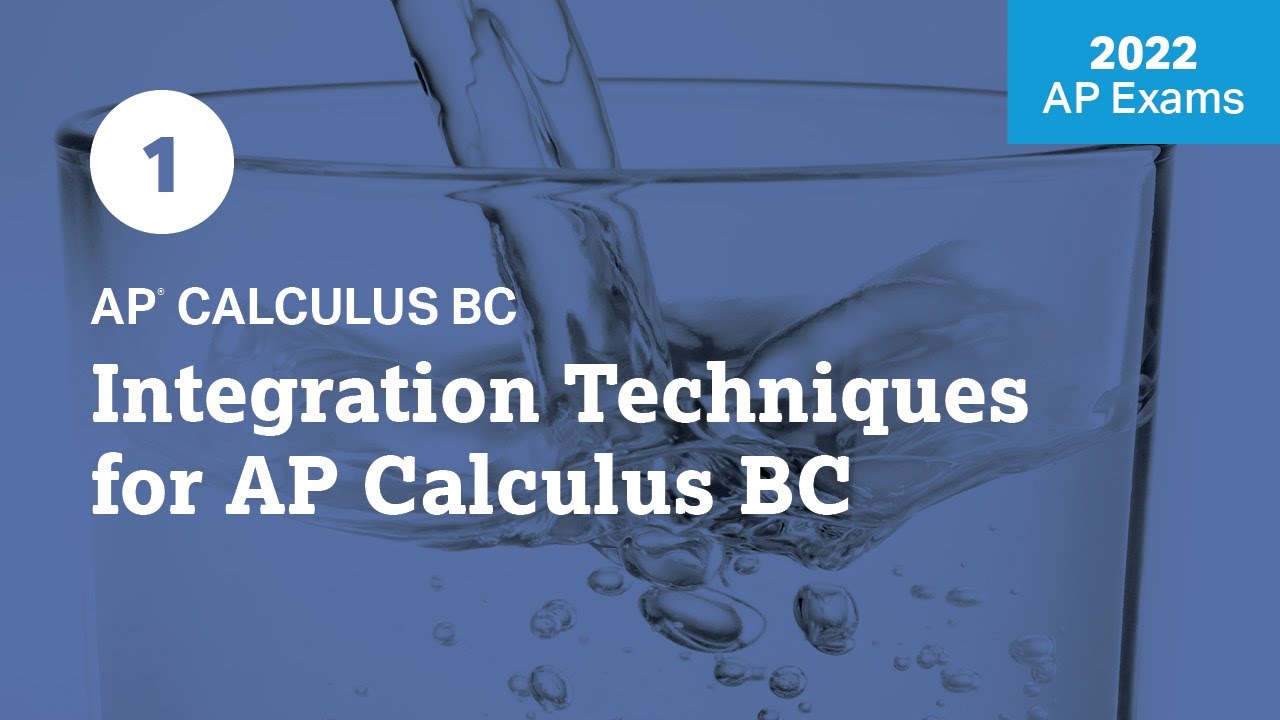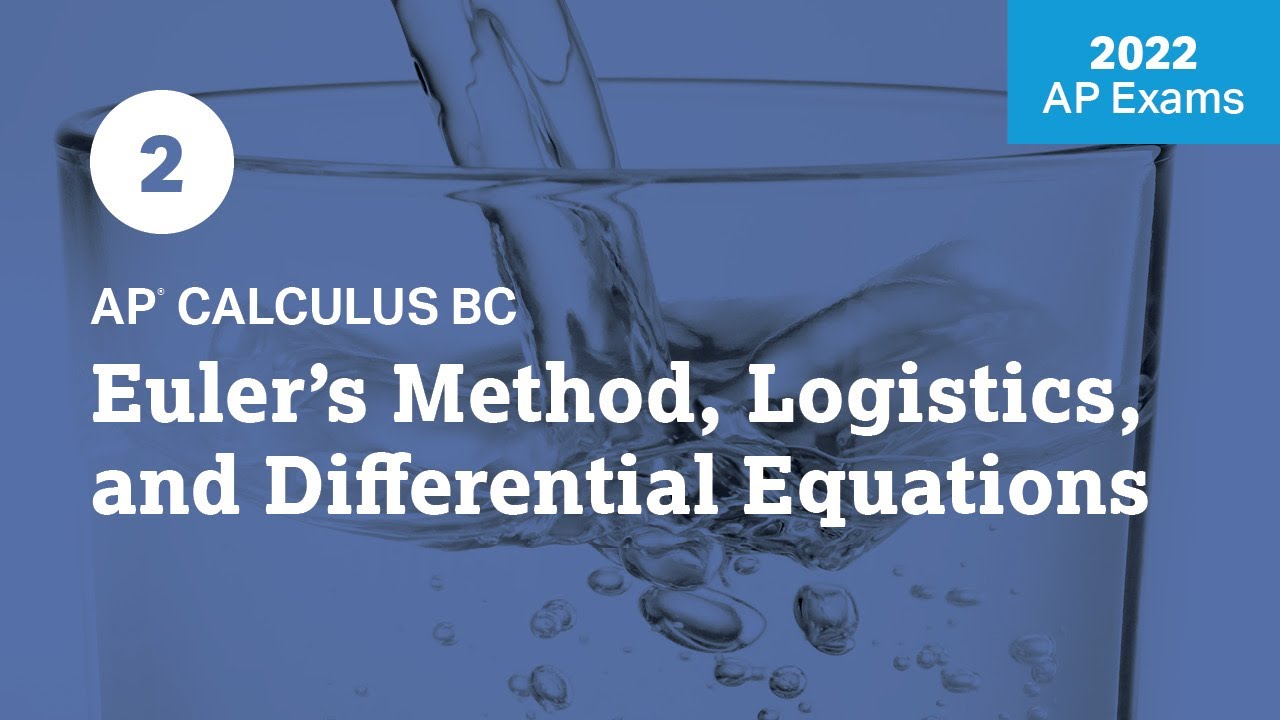2021 Live Review 4 | AP Calculus BC | Understanding Integration Techniques
TLDRIn this engaging calculus session, Tony Record and Brian Passwater explore various integration techniques, including improper integrals and partial fractions, using the metaphor of the 'calculus tree'. They delve into the nuances of integration by parts, highlight the importance of proper notation, and demonstrate how to tackle complex problems by strategically selecting values and applying limits. The session is a rich blend of theoretical concepts and practical problem-solving, aimed at preparing students for the challenges of the AP Calculus exam.
Takeaways
- 🌳 The session focuses on understanding and mastering various integration techniques in calculus, particularly for the AP Calculus BC exam.
- 📚 The 'calculus tree' analogy is used to describe the process of taking derivatives (smooth 'derivative branch') and antiderivatives (rough 'integration branch').
- 👨🏫 Tony Record and Brian Passwater are teachers who provide insights and examples to help students understand complex calculus topics.
- 📝 The transcript discusses the importance of proper notation and following mathematical procedures, especially when dealing with improper integrals and limits.
- 🧩 The concept of partial fractions is introduced as a method to break down complex fractions for easier integration, particularly when the denominator can be factored.
- 🔄 Integration by substitution (u-substitution) is emphasized as a fundamental technique for solving a wide range of integration problems.
- 🚫 The transcript warns against the common mistake of treating infinity as a number, which leads to incorrect conclusions when dealing with improper integrals.
- 📊 The session highlights the need to understand the behavior of functions, especially when dealing with vertical asymptotes and natural logarithms in the context of integration.
- 📈 The concept of improper integrals is explained, with a focus on how to handle them properly by using limits and avoiding undefined values in the denominator.
- 🔧 Integration by parts is presented as a technique for dealing with products of functions, which can be reversed using the product rule.
- 🎯 The importance of practice and familiarity with different types of calculus problems is stressed, as it prepares students for the variety of questions they may encounter on the AP Calculus BC exam.
Q & A
What is the main metaphor used in the transcript to describe the process of learning calculus?
-The main metaphor used is sitting under the 'calculus tree', with the two main branches being the derivative branch and the integration branch, each representing different aspects of calculus.
What are the three unique integration techniques mentioned that are specific to the Calculus BC exam?
-The three unique integration techniques for the Calculus BC exam are integration by parts, improper integration, and integration involving partial fractions.
How does the transcript describe the process of partial fractions?
-Partial fractions are described as a precalculus idea where a complex fraction is split into simpler fractions with linear denominators, allowing for easier integration.
What is the significance of the constant 'k' in the function f(x) = 1/(x^2 - kx + 16)?
-The constant 'k' is significant as it allows for flexibility in the function, potentially requiring students to plug in different values of 'k' to explore various scenarios and understand how 'k' affects the function and its integration.
How does the transcript emphasize the importance of notation in solving calculus problems?
-The transcript emphasizes that proper notation is crucial for earning full credit on the exam. It highlights the need for clear and correct mathematical notation, especially when dealing with improper integrals and limits.
What is the role of 'u-substitution' in the integration techniques discussed?
-'U-substitution' is a fundamental technique used to simplify the process of integration. It involves letting 'u' be a part of the integrand that can be easily differentiated, thus transforming the original integral into a more manageable form.
What is the significance of the natural log function in the context of the integrals discussed?
-The natural log function is significant as it often results from the integration process, especially when dealing with fractions that have variables in the denominator. It is used to express the anti-derivative of certain functions in the examples provided.
How does the transcript address the concept of improper integrals?
-The transcript addresses improper integrals by explaining that they involve limits, such as approaching infinity or dealing with undefined values like zero in the denominator. It emphasizes the need to use proper mathematical notation and the concept of limits to handle these types of integrals.
What is the role of the College Board in dictating the content of the Calculus BC exam?
-The College Board dictates the content of the Calculus BC exam by specifying what topics and techniques students are expected to learn and be tested on. They also provide guidelines on proper notation and mathematical conventions that students must follow to earn credit for their work.
What is the significance of the absolute value function in the context of the integrals discussed?
-The absolute value function is significant in the context of the integrals as it can affect the domain of the function being integrated and the behavior of the integral, especially when dealing with vertical asymptotes or undefined values.
Outlines
🌳 Introduction to Calculus and Integration Techniques
The video begins with a metaphorical introduction to calculus, comparing the process of taking derivatives to the smooth branch of a tree, while integration is likened to the rough branch. The speaker, Tony Record, a teacher from Avon High School, sets the stage for the lesson on integration techniques with Brian Passwater, another teacher. They emphasize the importance of understanding integration in calculus, particularly for the AP Calculus BC exam, and outline the topics that will be covered, including integration by parts, improper integration, and integration involving partial fractions.
📚 Detailed Explanation of Partial Fractions
The paragraph delves into the concept of partial fractions, a method for integrating complex fractions. The speaker explains the process of factoring the denominator and splitting the fraction into simpler parts. A specific function is used as an example to demonstrate how to apply partial fractions, including the steps of factoring, setting up the equation, and solving for the constants. The speaker also discusses the importance of proper notation and the role of limits in the context of improper integrals.
🌐 Improper Integrals and Their Solutions
This section focuses on improper integrals, particularly those that extend to infinity. The speaker clarifies the difference between infinity as a concept and as a number, emphasizing that infinity is not a number and should be treated with limits. A detailed example is provided, where the speaker integrates a function from 6 to infinity, demonstrates the proper notation for improper integrals, and shows how to evaluate the integral by taking the limit as the upper bound approaches infinity.
🔄 Integration by Substitution and Problem Solving
The speaker introduces integration by substitution, a technique used when the integral cannot be solved through u-substitution. An example is given where the speaker demonstrates how to identify a suitable u, set up the integral, and solve for the constants involved. The process is shown for a specific integral involving the function f(x) and the constant k. The speaker also discusses the importance of understanding the boundaries of integration and how to handle them when they involve undefined values.
🧩 Solving Definite Integrals with Limits
The paragraph discusses the method of solving definite integrals that involve undefined values within their interval. The speaker uses the concept of limits to approach the problematic value without actually reaching it. A specific integral is used as an example, where the speaker shows how to split the integral into two parts to avoid the undefined value and then combine the results using limits. The speaker also highlights the importance of understanding the behavior of the integrand's graph to determine if the integral converges or diverges.
📈 Summary of Integration Techniques and Upcoming Topics
In the concluding section, the speakers summarize the integration techniques covered in the video, including integration by parts, improper integration, partial fractions, and u-substitution. They also provide a preview of the topics that will be covered in the upcoming videos, such as differential equations, series convergence, and additional problems involving tables. The speakers encourage viewers to practice the problems provided and to stay tuned for the next set of lessons to ensure they are well-prepared for the AP Calculus exam.
Mindmap
Keywords
💡Derivative
💡Integration
💡Antiderivative
💡Integration by Parts
💡Improper Integration
💡Partial Fractions
💡U-Substitution
💡Limits
💡Taylor Series
💡Logarithm
Highlights
The introduction of the calculus tree metaphor, with the derivative branch being smooth and the integration branch being rough, setting the stage for the discussion on integration techniques.
The explanation of the three unique BC integration ideas: integration by parts, improper integration, and integration involving partial fractions, which are not on the AB exam.
The emphasis on the importance of proper notation and understanding the concept of limits when dealing with improper integrals.
The detailed walkthrough of solving a problem using partial fractions, including factoring the denominator and strategically choosing values for x to find the constants a and b.
The demonstration of how to handle an improper integral by using a dummy variable and taking the limit as the variable approaches infinity.
The application of integration by substitution (u-substitution) to solve a problem with a function that cannot be integrated directly.
The explanation of the integration by parts technique, which is likened to the product rule in reverse, and how to choose u and dv for the integration.
The discussion on the importance of knowing basic calculus formulas and being ready to apply them in various integration problems.
The presentation of a multiple-choice problem involving an improper integral and the use of limits to determine the convergence of the integral.
The strategy of using limits to approach a problematic point in an integral from both sides without actually reaching it, which is crucial for dealing with singularities.
The conclusion that the improper integral diverges due to the natural log of a value approaching zero, indicating the integral does not exist.
The wrap-up summary emphasizing the importance of recognizing when to use u-substitution, checking for factorable denominators for partial fractions, identifying improper integrals, and understanding integration by parts.
The preview of upcoming topics, including differential equations, series convergence, and various problems involving tables, which are crucial for preparing for the AP Calculus exam.
The encouragement for students to practice the discussed integration techniques and to engage with the provided multiple-choice and free-response problems for better exam preparation.
Transcripts
Browse More Related Video

2022 Live Review 1 | AP Calculus BC | Integration Techniques for AP Calculus BC

5 | MCQ | Practice Sessions | AP Calculus BC

2022 Live Review 2 | AP Calculus BC | Euler's Method, Logistics, and Differential Equations

8 | FRQ (No Calculator) | Practice Sessions | AP Calculus BC

4 | FRQ (No Calculator) | Practice Sessions | AP Calculus BC

2022 Live Review 5 | AP Calculus BC | Working with and Manipulating Series
5.0 / 5 (0 votes)
Thanks for rating: